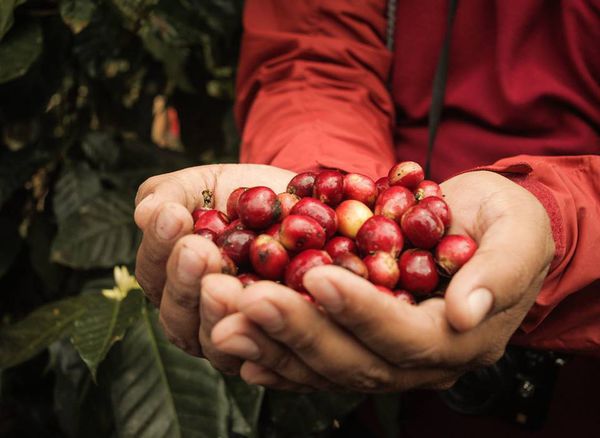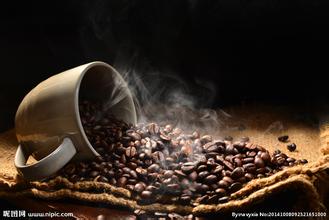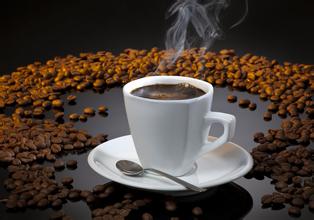The best boutique coffee enters the Panamanian manor
Fine coffee beans must be good quality beans without blemishes. It has to have outstanding flavor, not "no bad taste", but "very good taste".
Must be excellent varieties, such as the original Bourbon species, Mocha species, Tipika species, these species produced coffee beans have a unique aroma and flavor, far from other species can be compared, but the relative yield is low, in recent years in pursuit of disease resistance and yield improvement, there have been a lot of improved species, such as Kenya to promote a large number of high-yield rural 11 species, but taste and quality greatly reduced, of course, can not be called "fine coffee".
The growing environment of fine coffee beans also has higher requirements. It generally grows at an altitude of 1500 meters or even 2000 meters above sea level, with suitable precipitation, sunshine, temperature and soil conditions. Some world-famous coffee beans also have special geographical conditions, such as the mountain clouds in the Blue Mountains, the free shade provided by the afternoon "flying clouds" in Kona, and the volcanic ash soil in Antigua, which provide conditions for the growth of fine coffee.

The microclimate of the Panamanian highlands is the most important resource that makes Panamanian coffee unique. Panama's east-west environment allows cold air currents to flow through the Central Mountains and converge above 6500 feet, thus creating a variety of microclimates in the Boquete and Volcán-Candela regions, making them the main producers of Panamanian coffee. These specialty coffees are grown on nutrient-rich, well-balanced soil in the Baru volcano region.
When it comes to Panama, most people probably know only about Panama Canal and not Panama Coffee. Panama's main coffee producing area is located near the Baru volcano in the west. Boquete, a small town in the east of the volcano, is famous for its Emerald Manor, and Volcán-Candela, on the west side, is also the No.2 coffee town, where the famous Carmen Manor is located.
It was the construction of the Panama Canal 100 years ago that attracted a large number of senior European intellectuals. After the completion of the canal, a large number of senior engineers stayed because of their fascination with the excellent climate in western Panama. They purchased a manor in Boquete and opened the first fine coffee cultivation in Panama. But the early Panamanian coffee was not well known and did not produce much. But why did geisha suddenly become popular in 2004 and occupy the top coffee list for a long time? It starts with the origin of geisha.
Emerald Manor brings geisha to coffee customers all over the world. Before lifting the red veil of rose summer, she was actually a member of the windbreak forest at the edge of coffee forest. Because the coffee flavor of geisha varieties below 1400m altitude is ordinary and the yield is extremely low, it has no economic value. However, if it is planted at an altitude above 1500m, it will be tempered by cold wind and will show a unique flavor spectrum. It is amazing. Emerald Manor owners Peterson and his son stumbled upon this secret and set out to grow Geisha independently and compete in the BOP competition in 2004 as Jaramillo Special, bringing the world geisha craze to a head.
Where did Geisha come from?
According to various sources, the circulation route is roughly as follows: 1931 British envoy goes to Geisha Mountain, Ethiopia to collect disease-resistant soybean seeds-1931 - 1932 Seeds are transmitted under Geisha and Abyssinian names to Kitale trial in Kenya-1936 Young plants are transplanted to Ryan Mugu Coffee Research Institute in Uganda and Tanzania (Lyamungu) Trial planting-CATIE Coffee Research Institute in Costa Rica introduced young plants from Ryan Mugu and other countries several times in 1953-Panamanian coffee farmer Don Bache introduced disease-resistant geisha varieties from CATIE in 1963. Although there are data to prove that geisha have been passed down for decades, it is difficult to determine whether the current geisha are the seeds introduced in those years, and it is not known whether they have experienced interbreeding.
Panama geisha unique orange honey flavor, with "god kissed orange gene", presumably thanks to the blessing of good mountains and good water in panama, high altitude low temperature stable climate makes coffee here slow growth, high hardness beans, all have a unique strong flavor. Although geisha is good, its output is really limited. The geisha produced by Emerald Manor is less than 12 tons per year, and the top-grade geisha is only 200 to 300 kilograms. It is difficult to satisfy the taste buds of coffee lovers all over the world. Therefore, major well-known producing areas around the world have stepped up trial planting of geisha in an effort to show different flavors of geisha in different landforms.
Panama's east-west geography allows cold air currents to flow through the Central Mountain Range and converge above 6500 feet, thus forming a variety of unique microclimates in Boquete, Volcán, Candela, Santa Clara and other places, coupled with nutrient-rich and balanced volcanic ash soil, making these areas also known as Panama Coffee and the world's top fine coffee.
Coffee cultivation in Panama began with the first Typica coffee seedlings brought by Europeans in 1780, and today it has developed into Typica, Caturra, Catuai and Geisha varieties, producing coffee with jasmine, citrus, ripe fruit, berries, caramel, special sweetness, vanilla, chocolate and other flavors. Panama produces only 240 tons of coffee a year, and Geisha less than 5%. Panama coffee is mostly washed, refreshing and clean can highlight the citrus honey fragrance of geisha, but in recent years, sun-baked geisha also has bright spots, trading prices often exceed washing.
Panama has world-famous boutique coffee estates, emerald estates in Boquete district on the east side of the volcano La Esmeralda, needless to say, owns Harami Coffee Garden. Mario Geisha by Jaramillo (Geisha Mario) and Caniawei Butterfly Montania Geisha by Canas Verdes (Geisha Montana) Set a new Geisha auction record, Valentina Manor in the same district (Finca la Valentina) produced "Geisha Arista Agrario" won the 2011BOP champion; Carmen Estate in the Volcan district on the west is not inferior, and its products have been ranked in the top five of BOP competitions for many years.
Please point out if there is any impropriety.
Official Account: Cupping_Simon
Important Notice :
前街咖啡 FrontStreet Coffee has moved to new addredd:
FrontStreet Coffee Address: 315,Donghua East Road,GuangZhou
Tel:020 38364473
- Prev

Panama coffee beans from Panama coffee flavor
Panama is located at 9 degrees north latitude, at the confluence of the Central Mountain Range, where Mount Baru, one of the highest volcanoes in Central America, is located. With an elevation of more than 11,400 feet, the surrounding soil is rich in nutrients and fertile soil, providing sufficient conditions for the planting and cultivation of Panamanian coffee. The appropriate microclimate, soil, temperature and altitude of these highlands
- Next

Does Colombian coffee practice pay attention to skill?
Colombia, located in the northwest of South America, is a beautiful country with a long history. Indians have lived on this land since ancient times. It was colonized by Spain in 1531 and gained independence in 1819. It was renamed in 1886 to commemorate Columbus, the discoverer of the American continent. Colombia has beautiful mountains and rivers, beautiful scenery, pleasant climate and four seasons.
Related
- Does Rose Summer choose Blue, Green or Red? Detailed explanation of Rose Summer Coffee plots and Classification in Panamanian Jade Manor
- What is the difference between the origin, producing area, processing plant, cooperative and manor of coffee beans?
- How fine does the espresso powder fit? how to grind the espresso?
- Sca coffee roasting degree color card coffee roasting degree 8 roasting color values what do you mean?
- The practice of lattes: how to make lattes at home
- Introduction to Indonesian Fine Coffee beans-- Java Coffee producing area of Indonesian Arabica Coffee
- How much will the flavor of light and medium roasted rose summer be expressed? What baking level is rose summer suitable for?
- Introduction to the characteristics of washing, sun-drying or wet-planing coffee commonly used in Mantenin, Indonesia
- Price characteristics of Arabica Coffee Bean Starbucks introduction to Manning Coffee Bean Taste producing area Variety Manor
- What is the authentic Yega flavor? What are the flavor characteristics of the really excellent Yejasuffi coffee beans?

